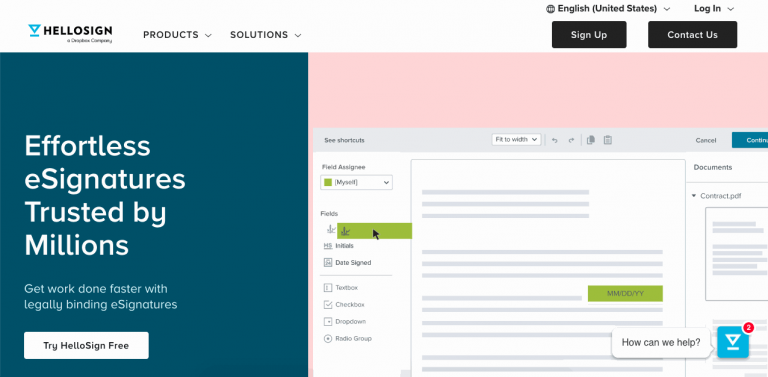Best Document Signing Software for Businesses in 2024: A Comprehensive Guide
Signing documents is a fundamental part of any business operation. From contracts and agreements to invoices and forms, the need to sign documents efficiently and securely is paramount. With the rise of digitalization, paper-based signing processes are becoming obsolete, replaced by the convenience and efficiency of electronic signature software. But with so many options available, choosing the right document signing software can feel overwhelming. This guide will help you navigate the landscape and find the perfect solution for your business needs.
Keywords: document signing software, electronic signature, e-signature, business software, digital signature, contract signing, secure signing, workflow automation, compliance, legal, affordable, best software, top software, review, comparison, features
Understanding Your Needs: Choosing the Right Software
Before diving into specific software options, it’s crucial to understand your business’s unique requirements. Consider the following factors:
-
Document Volume: How many documents do you need to sign each month or year? High-volume businesses require software capable of handling large workloads efficiently.
-
Team Size: Will multiple users access the software simultaneously? You’ll need software with robust user management and collaboration features.
-
Integration Needs: Does your software need to integrate with your existing CRM, ERP, or other business systems? Seamless integration streamlines workflows and avoids data silos.
Security Requirements: What level of security is needed to protect sensitive data? Look for software that complies with industry regulations and provides robust security features like two-factor authentication and audit trails.
-
Budget: Electronic signature software comes at various price points. Determine your budget and look for options that offer the best value for your money.
-
User-Friendliness: Choose software that’s intuitive and easy to use, even for those less tech-savvy.

Key Features to Look For in Document Signing Software
Several key features distinguish excellent document signing software from the rest. Look for software that offers:
- Ease of Use: Intuitive interface and simple workflow.
- Secure Signing: Encryption, digital signatures, and audit trails.
- Multiple Signature Options: Support for various signature types (e.g., typed, drawn, uploaded).
- Integration Capabilities: Seamless integration with other business tools.
- Templates & Automation: Pre-designed templates and automated workflows.
- Mobile Accessibility: Ability to sign documents on mobile devices.
- Compliance: Adherence to relevant regulations (e.g., ESIGN, UETA).
- Customer Support: Reliable and responsive customer support.
Top Document Signing Software Options: A Detailed Comparison
Now let’s explore some of the leading document signing software options available on the market. This isn’t an exhaustive list, but it represents a good cross-section of popular and reliable choices.
| Software Name | Pricing Model | Key Features | Pros | Cons |
|---|---|---|---|---|
| DocuSign | Subscription-based | Advanced security, extensive integrations, templates | Wide range of features, robust security, excellent customer support | Can be expensive, complex interface for some users |
| Adobe Sign | Subscription-based | Strong integrations with Adobe Creative Cloud, good security | User-friendly interface, seamless Adobe integration | Can be expensive, features may be overkill for smaller businesses |
| PandaDoc | Subscription-based | Proposal creation, e-signature, contract management | All-in-one solution for document creation and signing | Fewer integrations compared to DocuSign and Adobe Sign |
| HelloSign | Subscription-based | Simple interface, affordable pricing, good integrations | Easy to use, cost-effective, reliable | Limited advanced features compared to more expensive options |
| SignNow | Subscription-based | User-friendly interface, mobile accessibility, integrations | Excellent mobile app, intuitive interface, reasonable pricing | Fewer advanced features compared to DocuSign and Adobe Sign |
Keywords: DocuSign, Adobe Sign, PandaDoc, HelloSign, SignNow, pricing, features, comparison, pros, cons
Advanced Features to Consider
As your business grows, you may need more advanced features. These include:
- Workflow Automation: Automating document routing and reminders.
- Bulk Sending: Sending documents to multiple recipients simultaneously.
- Advanced Reporting & Analytics: Tracking document status and user activity.
- API Integrations: Connecting your software to custom applications.
- Branding & Customization: Adding your company logo and branding to documents.
Security and Compliance: A Critical Aspect
Security and compliance are paramount when choosing document signing software. Look for software that meets these criteria:
- Encryption: Ensures data is protected during transmission and storage.
- Digital Signatures: Provides legally binding and verifiable signatures.
- Audit Trails: Provides a record of all document activity.
- Compliance with Regulations: Adherence to regulations like ESIGN and UETA.
- Data Privacy: Compliance with data privacy regulations like GDPR and CCPA.
Choosing the Right Software for Your Business Size
The best software for your business will depend on your size and needs.
-
Small Businesses: HelloSign or SignNow offer user-friendly interfaces and affordable pricing.
-
Medium-Sized Businesses: PandaDoc provides a good balance between features and cost.
-
Large Enterprises: DocuSign or Adobe Sign offer extensive features and robust security but come at a higher price point.
Keywords: security, compliance, ESIGN, UETA, GDPR, CCPA, encryption, digital signatures, audit trails, data privacy, small business, medium business, large enterprise
Implementation and Training
Once you’ve selected your software, ensure you have a smooth implementation process. This includes:
-
User Training: Provide adequate training to your employees on how to use the software effectively.
-
Integration with Existing Systems: Ensure seamless integration with your CRM, ERP, and other systems.
-
Data Migration: If you’re migrating from another system, ensure a smooth data transfer.
-
Ongoing Support: Have a plan for ongoing support and maintenance.
Conclusion
Choosing the right document signing software is a crucial decision for any business. By carefully considering your needs, reviewing the features of different software options, and prioritizing security and compliance, you can find a solution that streamlines your workflows, improves efficiency, and protects your sensitive data. Remember to consider the long-term implications of your choice and select a solution that will grow with your business.
| Software Name | Best for | Price Range (per user/month) |
|---|---|---|
| HelloSign | Small businesses, ease of use | Low |
| SignNow | Small businesses, mobile users | Low to Medium |
| PandaDoc | Medium-sized businesses | Medium |
| Adobe Sign | Large enterprises, Adobe users | High |
| DocuSign | Large enterprises, advanced features | High |
Keywords: implementation, training, user training, integration, data migration, support, maintenance
Frequently Asked Questions (FAQs)
- Q: Are electronic signatures legally binding?
A: Yes, electronic signatures are generally legally binding in most jurisdictions, provided they meet certain requirements. The Electronic Signatures in Global and National Commerce Act (ESIGN) in the US and similar legislation in other countries establish the legal validity of electronic signatures.
- Q: What is the difference between a digital signature and an electronic signature?
A: An electronic signature is a broad term that encompasses various methods of signing documents electronically. A digital signature is a specific type of electronic signature that uses cryptography to verify the authenticity and integrity of the document. Digital signatures offer a higher level of security than other types of electronic signatures.
- Q: How secure is electronic signature software?
A: Reputable electronic signature software providers employ robust security measures, including encryption, digital signatures, and audit trails, to protect the security and integrity of signed documents.
- Q: What are the benefits of using electronic signature software?
A: The benefits include increased efficiency, reduced costs, improved security, enhanced collaboration, and better compliance.
- Q: How much does electronic signature software cost?
A: The cost varies widely depending on the provider, the features offered, and the number of users. Pricing models typically range from per-user monthly subscriptions to tiered pricing plans based on usage volume.
Keywords: FAQs, legal binding, digital signature, electronic signature, security, benefits, cost
Semoga artikel ini membantu Anda memilih perangkat lunak penandatanganan dokumen terbaik untuk bisnis Anda. Ingatlah untuk mempertimbangkan kebutuhan khusus Anda dan melakukan riset menyeluruh sebelum membuat keputusan.

